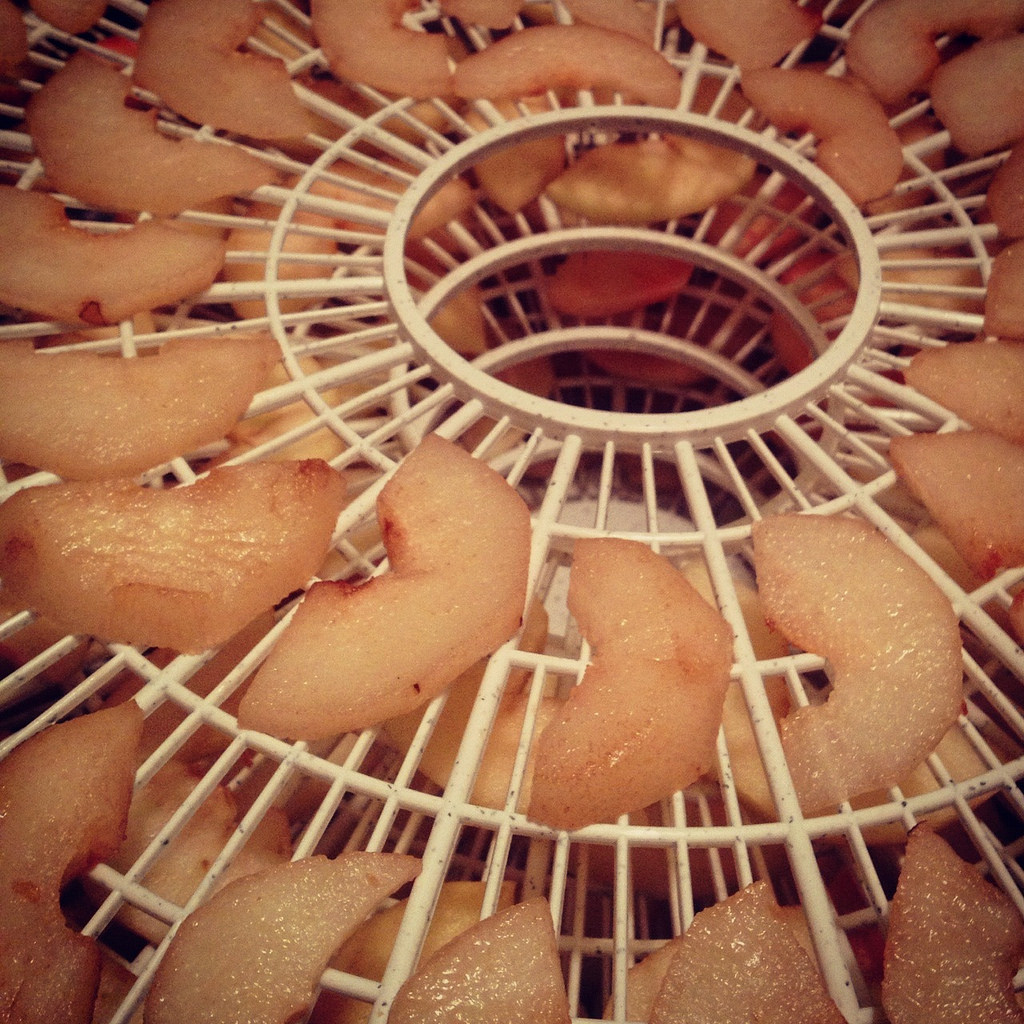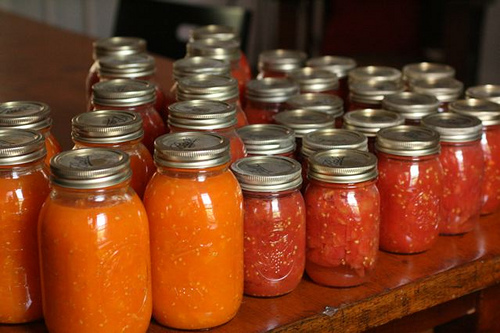It’s hard to believe that in just one week, we harvested more than 20,000 pounds of cherries. And we even left a few trees full for the birds!
Such is farming – and gardening – after all. In the winter, we dream up our designs and flip through gardening catalogs, prepare our beds and tend to seedlings in the spring, and then suddenly, it’s harvest time!
Amongst the excitement of harvesting a big, bountiful crop, smooshing squash bugs and stocking up at farmers markets, we somehow remember to find the time to preserve some of these summertime gifts-from-nature, so that we can enjoy the goodness of seasonal produce all year long.
Whether you’re new at preserving or have been at it since your toddler years in the kitchen with Grandma, here are a few our tips, tricks and favorite ways to savor the harvests for months to come.
1. Drying
Fresh herbs are a treat in the kitchen, especially when they come from your own garden. But many herbs hold their flavor incredibly well if they’re dried properly. You can rubber-band bunches of herbs and hang them to dry in a cool, dark place with good air flow. If you don’t have a place in your home like this, you can cover hanging herbs with paper bags.
Another way is to spread out your herbs on a flat surface or just place them in a basket, as long as you toss them regularly so that they all dry evenly. Cover with a cheese cloth to keep the dust off. Whichever method you choose, be sure that all parts of the herb are fully dry before putting into storage.
Similarly, you can enjoy the health benefits of medicinal flowers like Calendula, Nasturtium and Echinacea after their bloom by drying them. Pick the petals off, and use the basket drying method just mentioned.
Hang-dry non-edible flowers upside-down to enjoy them aesthetically. Some flowers, like Statice and Gomphrena, hold their shape and color better than others. Experiment with the flowers in your garden to discover new dried beauties.
2. Dehydrating

Dehydrators offer a great, more hands-off alternative to canning fruits and vegetables. They also give us yummy treats like raisins and craisins.
Every cherry season after the harvest, I pit and dehydrate lots of organic Bing cherries. They taste great in yogurt, baked goods and just snacking on.
I also love to dehydrate tomatoes – both heirlooms and cherry tomatoes. Be sure to slice them, even the little cherry tomatoes, so that they dehydrate fully and quickly.
Add salt or other seasonings before dehydrating only if you want the flavor. Add lemon juice to lighter colored fruits to prevent browning. Otherwise, if your fruits and vegetables are fully dehydrated, they will preserve themselves.
3. Canning

Granted, canning takes time. If you’re new to canning, it’s best to consult a few recipes the first couple of times to be sure that you safely preserve your goodies. But I want to share with you my favorite thing to can: Tomatoes de Provence.
After blanching and skinning my tomatoes (or not!) I mix them into our Herbes de Provence blend, made with organic fennel, organic lavender, organic sage, organic basil and organic oregano. I add a bit of olive oil, whole cloves of garlic and some fresh basil, then can the whole savory mixture – perfect for quick pasta dishes later on.
Is your mouth watering yet?
Just imagine how it will all taste in the dead of winter, when snow is falling and there isn’t a harvest in sight.

